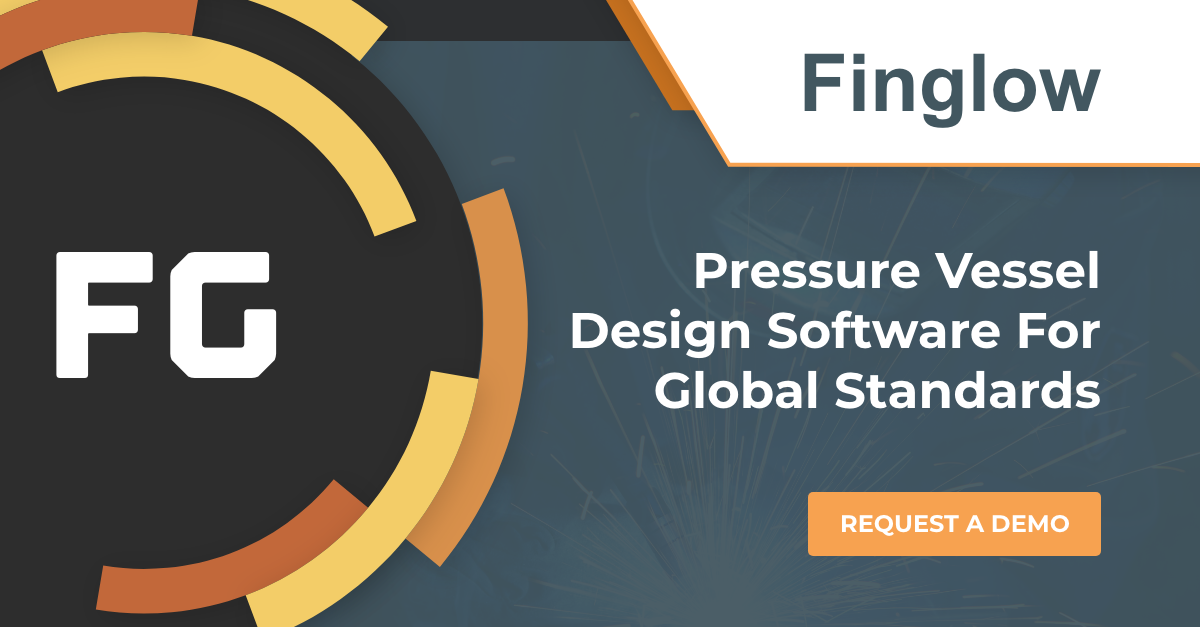When working with pressure vessel design software, the product needs to be in tune with the various safety codes such as ASME. However, those codes frequently change, and problems can arise when the design software you use doesn’t accommodate recent code changes.
The ASME BPVC 2019 code changes were just released and provide some strong guidance for pressure vessel and heat exchanger designers.

CEI has just acquired and made available Finglow, a pressure vessel and heat exchanger design software that augments the tools designers need to feel confident moving forward into 2020.
THE INTENT OF THE NEW CHANGES!
At a high level, when Sec. VIII, Div 1 doesn't tell you what to do, the guidance is to look at Div 2. If Div 2 doesn't tell you, then look at other standards like EN 13445 or PD 5500 that can meet Div 1 safety criteria.
In house calculations are also acceptable as long as they meet the requirements of UG-23, but it is expected that inspectors will come to favor Div 2 or other industry standards as Recognized and Generally Accepted Good Engineering Practices (RAGAGEP).
Related Article: 2020 Pressure Vessel & Heat Exchanger Design Guidelines and Resources
DETAILS OF THE U-2(G) ASME BPVC CODE CHANGES?
- The Division of Section VIII doesn’t contain rules that cover all details of construction. When complete details aren’t given, the manufacturer, subject to the acceptance of the authorized inspector, shall provide the appropriate details.
- Where design rules don’t exist in this Division, use one of the following methods:
- Mandatory Appendix 46
- Proof test in accordance
- Other recognized and generally accepted methods, such as those found in other ASME/EN/ISO/National/Industry Standards or Codes--if using this method, make sure it provides details of design consistent with the allowable stress criteria provided in UG-23.
Basically, Division 1 acknowledges that it does not provide solutions for every aspect of geometry and loading that a Division 1 vessel may require to consider. Now U-2(g) makes an effort to guide the user to Division 2 and then overseas to the international codes to help cover all the bases.
ASME CODE DEVELOPMENT MEETINGS HELP CEI ANTICIPATE NEEDS
CEI staff has been involved in ASME code development meetings since 2004. Because of this involvement, they knew these ASME code changes were coming and were able to plan for them.
CEI realized they needed to provide their users with more design solutions. For this reason, CEI acquired Finglow, which provides proven calculation solutions for ASME Section VIII Div 1, ASME Section VIII Div 2, EN 13445, PD 5500, and TEMA.
Since ASME Section VIII, Div 1 is focused on internal and external pressure, the CEI suite of solutions has built out the additional design calculations you need to handle these common and often complex loads:
- Dead loads
- Wind loads
- Seismic loads
- Combinations like internal pressure plus axial load and Bending Moment (from the loads above)
The acquisition of Finglow adds new design options for nozzles, saddles, heads, cones, and other components into our already established library. CEI customers can use the DesignCalcs and Finglow features under the direction of the new U-2(g) changes to properly design their Division 1 vessels for those geometries and loadings that Division 1 does not provide a solution for.
By being a CEI customer, you directly benefit from our dedication to staying abreast of all upcoming code changes. We make sure to stay involved in code meetings, such as these latest ASME BPVC 2019 meetings in Salt Lake and Minneapolis and drive actionable solutions for the various pressure equipment industries.
CEI is an industry leader in Pressure Vessel and Heat Exchanger design software.



Leave a Comment